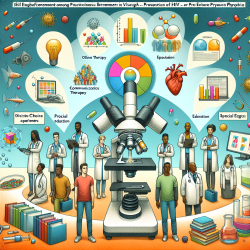The opioid epidemic has become a pervasive issue in the United States, affecting countless lives and communities. Despite its significance, discussions around adolescent drug use often remain absent from educational settings. A recent study titled "Figured Worlds of Addiction: A Content Analysis of 10 YAL Texts" offers valuable insights into how addiction is portrayed in young adult literature (YAL) and provides educators with tools to address this pressing issue.
The Role of Young Adult Literature in Shaping Perceptions
The research conducted by Banack, Moore, and Rigell utilizes the theory of figured worlds to analyze how addiction is constructed within ten popular YAL novels. These texts reveal three predominant themes:
- The majority of protagonists are middle-class, white teenage girls.
- Their experiences with addiction are often preceded by traumatic events.
- Their socio-economic privilege grants them access to rehabilitation facilities and mental health support.
This analysis highlights the limited representation of diverse identities and experiences with addiction in YAL. It underscores the need for educators to critically evaluate the texts they introduce to students, ensuring they offer a broader perspective on addiction that challenges prevailing stereotypes.
Implications for Educators
The findings from this study have significant implications for educators seeking to foster open and informed discussions about substance abuse with their students. By integrating YAL texts that depict a wide range of experiences with addiction, educators can help students develop empathy and understanding for those affected by substance use disorders.
Encouraging Critical Thinking: Educators can use these texts as a springboard for discussions on the social construction of addiction. By examining how race, gender, and socio-economic status influence characters' experiences, students can gain a deeper understanding of the complexities surrounding substance abuse.
Diversifying Reading Lists: To provide students with a more comprehensive view of addiction, educators should seek out YAL texts that feature protagonists from diverse backgrounds. This approach not only enriches students' reading experiences but also helps dismantle harmful stereotypes about who is affected by addiction.
The Path Forward: Further Research and Action
This study serves as a call to action for educators and researchers alike. There is a need for further research into how YAL can be used as an educational tool to address substance abuse. Additionally, educators should advocate for more inclusive representations of addiction in literature to better reflect the realities faced by adolescents today.
Figured Worlds of Addiction: A Content Analysis of 10 YAL Texts










